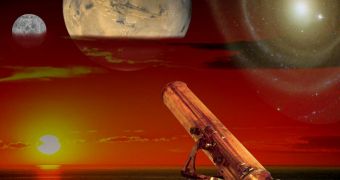Officials at the European Space Agency (ESA) have just announced that they have selected three projects as finalists for selection on two new missions it has planned for the next decade. The representatives said that the three proposals focused on studying dark matter, exoplanets, and the Sun respectively, but emphasized that only two of them will make it into the final selection. The decision was made Thursday, February 18, by the ESA Science Program Committee (SPC). The three selections have entered the definition phase, the last one before the implementation phase which will see the actual spacecrafts, and their instruments, being built and launched.
The three projects have fairly suggestive names: the Euclid (dark matter), the PLAnetary Transits and Oscillations of stars (PLATO), for exoplanetary research, and the Solar Orbiter, for assessing the hidden variations of our planet's parent star. Scientists who designed these projects have all the reasons to be proud of their work, even if they don't get selected for actual space exploration, ESA officials said. They add that more than 52 proposals were submitted for the two open mission slots, in 2007.
The candidates were weeded out to just six projects in 2008, when the remaining participants in this contest had their projects sent to industrial assessment agents. The reports coming in from these parties have determined which of the final six remained in the race. “It was a very difficult selection process. All the missions contained very strong science cases,” explains the chair of the SPC, Lennart Nordh. He is also a member of the Swedish National Space Board. He adds that a final selection will take place once all activities related to the definition phase are completed. The most sensible deadline for that to happen is sometime in 2011.
“These missions continue the European commitment to world-class space science. They demonstrate that ESA’s Cosmic Vision program is still clearly focused on addressing the most important astronomical science,” says the ESA Director of Science and Robotic Exploration, David Southwood. At the SPC meeting, it was additionally announced that a July meeting will decide whether ESA gets involved with the Space Infra-Red Telescope for Cosmology and Astrophysics (SPICA) project, proposed by the Japan Aerospace Exploration Agency (JAXA).

 14 DAY TRIAL //
14 DAY TRIAL //